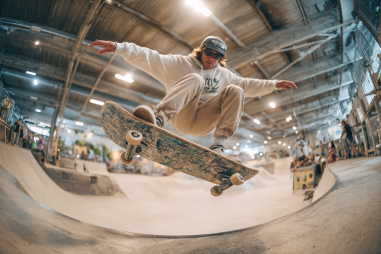The skateboarding industry has been riding a wave of transformation in recent years, and 2025 promises even more exciting developments. As skateboarding culture continues to surge globally, the market adapts to changing consumer preferences, technological breakthroughs, and evolving sustainability demands. Whether you’re an avid skater, a brand strategist, or simply curious about the dynamics of this vibrant sector, understanding the market trends shaping skateboarding in 2025 is crucial. Let’s dive deep into the factors driving growth, innovation, and the future outlook of this energetic industry.
Overview of the Global Skateboarding Market
The global skateboarding market has experienced significant growth, fueled by the sport’s rising popularity across various age groups and regions. Once viewed as a niche or counterculture activity, skateboarding is now embraced worldwide in both urban and suburban settings. According to recent reports, the market’s value has been increasing steadily, with projections suggesting continued upward momentum through 2025 and beyond.
Several factors contribute to this expansion. First, skateboarding’s debut as an official Olympic sport in the Tokyo 2020 Games elevated its visibility and legitimacy. This inclusion inspired a new generation of athletes and enthusiasts, boosting demand for skateboards, apparel, safety gear, and accessories. Second, skateparks are being developed at an unprecedented rate, providing safe and accessible environments for riders to practice, which further supports industry growth. Finally, the growing interest in skateboarding as a lifestyle—beyond just sport—embraces fashion, music, and art, attracting diverse consumer segments.
Key Trends Driving Growth in Product Categories
Within the skateboarding industry, product categories are evolving in response to consumer needs and preferences, reflecting exciting trends that are driving sales and innovation.
- Electric Skateboards: One of the fastest-growing segments is the electric skateboard market. With advancements in battery technology and motor efficiency, electric skateboards offer an accessible way to commute and enjoy skateboarding without intensive physical exertion. Their appeal extends to both casual riders and urban commuters looking for eco-friendly transportation alternatives.
- Customizable Decks and Components: Personalization has become a significant trend, with riders seeking unique deck designs, shapes, and materials tailored to their style and performance needs. Brands are offering modular boards and interchangeable parts, allowing skaters to mix and match components.
- Protective Gear and Safety Equipment: As skateboarding continues to expand its demographic reach, there’s a growing focus on safety. Manufacturers are innovating helmets, pads, and impact-resistant apparel using lightweight materials that don’t compromise mobility, encouraging safer practices among new skaters.
- Apparel and Footwear: Skate-inspired fashion remains integral to the industry’s culture. Collaborations with high-profile designers and streetwear brands have expanded skateboard apparel’s market beyond recreational users into mainstream fashion markets, driving sales in categories like sneakers, hoodies, and caps.
The Influence of Technology on Skateboarding Gear
Technology’s role in the skateboarding industry cannot be overstated. From manufacturing processes to product performance, innovative tech is shaping the way skateboards and accessories are designed and used.
Materials science has introduced carbon fiber composites and advanced polymers that make decks both lighter and more durable, which enhances riders’ performance and board longevity. Additionally, 3D printing technology enables rapid prototyping and customization of parts, reducing production costs and turnaround times.
Smart skateboards equipped with sensors and connectivity features are another technological breakthrough. These boards track speed, distance, tricks, and even provide safety alerts. Integration with smartphone apps helps riders analyze and improve their skills, and also enables social sharing, merging technology with community building.
Demographic Shifts Impacting Market Demand
The skateboarding demographic is shifting in exciting ways, influencing market demand substantially. Traditionally dominated by younger males, contemporary skateboarding attracts a broader and more diverse audience.
- Growing Female Participation: The number of female skateboarders is rising steadily, propelled by increased visibility of women in contests, sponsorship, and social media. Brands are responding by developing gender-inclusive gear and campaigns that celebrate female skaters.
- Urban Millennials and Gen Z: Younger generations value experiences, self-expression, and environmental consciousness, all of which align with skateboarding culture. These groups drive demand for eco-friendly products and digital engagement via social channels.
- Adult Enthusiasts: Adults who grew up skating in the 90s and 2000s continue to participate both recreationally and as collectors of vintage gear, contributing to the retro segment of the market.
The Role of Social Media and Digital Marketing
Social media platforms have become the beating heart of skateboarding culture and commerce. Instagram, TikTok, YouTube, and other channels give skaters the ability to share tricks, tutorials, and lifestyle content with global audiences instantly.
Brands leverage these platforms to engage consumers with influencer collaborations, live events, and user-generated content campaigns. Digital marketing allows companies to reach niche segments effectively while fostering authentic community connections that translate into brand loyalty.
The rise of online marketplaces also supports direct-to-consumer sales, reducing reliance on traditional retail and opening opportunities for smaller skate companies and startups to thrive.
Sustainability Trends Within the Industry
Environmental consciousness is a growing priority for consumers and manufacturers alike in the skateboarding world. Since many skate products involve plastics, woods, and metals, brands are seeking sustainable alternatives without sacrificing performance.
- Eco-Friendly Materials: Bamboo and sustainably harvested maple wood are gaining popularity for decks. Additionally, recycled plastics and biodegradable grip tapes are being introduced.
- Green Manufacturing Processes: Companies are adopting energy-efficient production methods and reducing waste during manufacturing.
- Product Longevity and Repairability: Designing gear that lasts longer and can be repaired rather than discarded aligns with consumer demand for sustainable consumption.
These initiatives not only reduce environmental impact but resonate strongly with a conscious consumer base that values ethics alongside style and functionality.
Future Outlook for the Skateboarding Market
Looking ahead, the skateboarding industry is positioned for sustained growth and transformation. The integration of technology, expanding participation demographics, and cultural mainstreaming will continue to boost market dynamism.
We can expect further innovations in electric and smart skateboards, pushing the boundaries of what the sport looks like. Furthermore, digital experiences such as virtual reality skateboarding and online communities will complement physical riding spaces, creating hybrid engagement opportunities.
As sustainability becomes ingrained in consumer expectations, brands that prioritize ethical sourcing and production will gain competitive advantage. Additionally, skateboarding’s influence on fashion and entertainment sectors will broaden, embedding its presence deeper into popular culture.
Overall, 2025 and beyond promise a vibrant future for skateboarding—one powered by creativity, inclusivity, and forward-thinking innovation.







